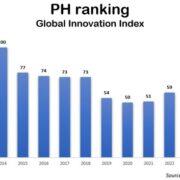Well-designed policy measures are needed urgently to prevent the deepening of existing levels of poverty, inequality and social unrest, according to the latest ILO report on global wages.
The severe inflationary crisis combined with a global slowdown in economic growth – driven in part by the war in Ukraine and the global energy crisis – are causing a striking fall in real monthly wages in many countries.
According to a new International Labour Organization (ILO) report, the crisis is reducing the purchasing power of the middle classes and hitting low-income households particularly hard.
The Global Wage Report 2022-2023: The Impact of inflation and COVID-19 on wages and purchasing power, estimates that global monthly wages fell in real terms to minus 0.9 per cent in the first half of 2022 – the first time this century that real global wage growth has been negative.
Among advanced G20 countries, real wages in the first half of 2022 are estimated to have declined to minus 2.2 per cent, whereas real wages in emerging G20 countries grew by 0.8 per cent, 2.6 per cent less than in 2019, the year before the COVID-19 pandemic.
“The multiple global crises we are facing have led to a decline in real wages. It has placed tens of millions of workers in a dire situation as they face increasing uncertainties,” said ILO Director-General, Gilbert F. Houngbo. “Income inequality and poverty will rise if the purchasing power of the lowest paid is not maintained. In addition, a much-needed post pandemic recovery could be put at risk. This could fuel further social unrest across the world and undermine the goal of achieving prosperity and peace for all.”
Inflation has a greater impact on low-wage earners
The cost-of-living crisis comes on top of significant wage losses for workers and their families during the COVID-19 crisis, which in many countries had the greatest impact on low-income groups.
The report shows that rising inflation has a greater cost-of-living impact on lower-income earners. This is because they spend most of their disposable income on essential goods and services, which generally experience greater price increases than non-essential items.
Inflation is also biting into the purchasing power of minimum wages, the report says. Estimates show that despite nominal adjustments taking place, accelerating price inflation is quickly eroding the real value of minimum wages in many countries for which data is available.
Measures to maintain living standards
The analysis shows there is an urgent need to apply well-designed policy measures to help maintain the purchasing power and living standards of wage workers and their families.
Adequate adjustment of minimum wage rates could be an effective tool, given that 90 per cent of ILO Member States have minimum wage systems in place. Strong tripartite social dialogue and collective bargaining can also help to achieve adequate wage adjustments during a crisis.
Other policies that can ease the impact of the cost-of-living crisis on households include measures targeting specific groups, such as giving vouchers to low-income households to help them buy essential goods, or cutting Value Added Tax on these goods to reduce the burden inflation places on households while also helping to bring down inflation.
“We must place particular attention to workers at the middle and lower end of the pay scale. Fighting against the deterioration of real wages can help maintain economic growth, which in turn can help to recover the employment levels observed before the pandemic. This can be an effective way to lessen the probability or depth of recessions in all countries and regions,” said Rosalia Vazquez-Alvarez, one of the report’s authors.
Regional differences
The report, which includes regional and country data, shows that in the first half of 2022, inflation rose proportionately faster in high-income countries than in low- and middle-income countries, leading to the following regional real wage trends:
· In Northern America (Canada and the United States), average real wage growth slid to zero in 2021 and dropped to minus 3.2 per cent in the first half of 2022.
· In Latin America and the Caribbean, real wage growth declined to minus 1.4 per cent in 2021 and minus 1.7 per cent in the first half of 2022.
· In the European Union, where job retention schemes and wage subsidies largely protected employment and wage levels during the pandemic, real wage growth increased to 1.3 per cent in 2021 and declined to minus 2.4 per cent in the first half of 2022.
· In Eastern Europe, real wage growth slowed down to 4.0 per cent in 2020 and 3.3 per cent in 2021, and fell to minus 3.3 per cent in the first half of 2022.
· In Asia and the Pacific, real wage growth increased to 3.5 per cent in 2021 and slowed down in the first half of 2022 to 1.3 per cent. When China is excluded from the calculations – considering the large weight the country has in the region – real wage growth increased by much less, at 0.3 in 2021 and 0.7 per cent in the first half of 2022.
· In Central and Western Asia, real wage growth grew strongly by 12.4 per cent in 2021 but slowed down to 2.5 per cent in the first half of 2022.
· In Africa, evidence suggests a fall in real wage growth to minus 1.4 per cent in 2021 and a decline to minus 0.5 per cent in the first half of 2022.
· In the Arab States, wage trends are tentative, but estimates point to low wage growth of 0.5 per cent in 2021 and 1.2 per cent in 2022.






